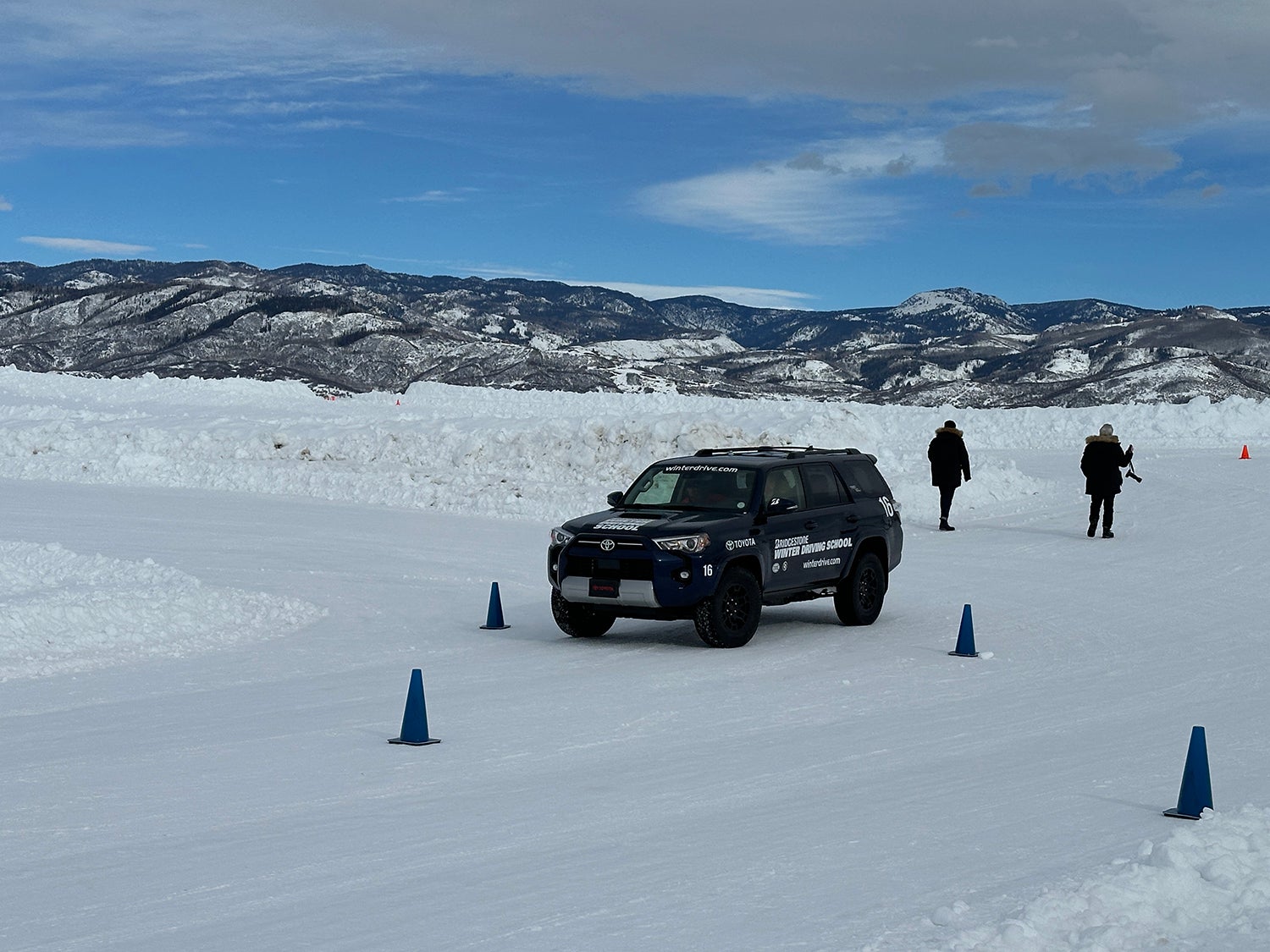The American Automobile Association (AAA) says winter storms and bad weather that result in snow or ice-covered roads cause nearly 500,000 vehicle crashes and more than 2,000 road deaths every year. Driving too fast, braking too hard, and swerving quickly has the potential to cause a loss of control. Tires play a big part in that equation, and factoring in the wrong tires for inclement weather or driving on tires with too much wear can equal disaster.
Tire companies are constantly working to improve winter tires to enhance driving safety, and tread, materials, shape, and design all play a role in the overall driving experience. We tested a variety of winter tires on slippery, snowy roads on a closed track at Bridgestone’s Winter Driving School in Colorado. In the process, we learned about what works (and doesn’t work) when the rubber hits the snow and ice.

Tread patterns and sipes
When it snows, choosing the right footwear is an important decision. Low-profile slip-on flats or low-tread loafers wouldn’t be a smart choice because they leave too much skin exposed to cold and wet. Plus, the probability of slipping on the ice increases exponentially. Rubber soles with large-pattern tread on winter boots makes more sense. Tires work in similar ways but incorporate specific technology and materials designed to keep thousands of pounds of metal (and its passengers) from skidding off the road.
If you’ve ever slid on the surface of slippery asphalt in your car, you know the alarming feeling of losing that control. During heavy rain, the tires on your car push the water forward, creating a wedge of liquid that can cause the tires to lose contact with the road; that’s called hydroplaning. The risk of hydroplaning increases in deeper water, and riding on tires with tread made to withstand those conditions is critical, as is ensuring the tires are not worn down, decreasing the tread.
The tread pattern is different on winter tires than what is on all-season and summer tires. Summer tires are more suited for curvy cruises on dry roads, with wide tread patterns. Winter tires include deeper treads and more sipes, which are tiny slits in the tire that dig into the snow, acting as biting edges on ice. Sipes gap open as tires roll across the driving surface to push snow or water away from the tires’ contact area, improving the grip. Together with the edges of the sections (called blocks) in the tread, winter tires offer better handling in winter weather.
On top of that, Bridgestone uses a proprietary technology that incorporates microscopic bubbles in the tires that disperses the thin layer of surface water. By moving that out of the way, the sipes and tread can do its work to bite into the ice and snow to keep control.
What may surprise some people is that snow on snow is what creates traction, which is why the depth of the tread is so important.
“When you make a snowball, it packs together because snow wants to stick to itself,” explains Will Robbins, a 20-year veteran tire specialist from Bridgestone. “The snow-on-snow is what gives you that grip when you brake or accelerate.”
Imagine the act of sticking and then unsticking two corresponding pieces of Velcro together, and then apart. The sticky edges of the snowflakes push together and pull apart with grip, not slip.
Tire structure
There are basic similarities between winter and summer tires, Robbins says, starting with the carcass. The carcass (also called the casing) supports the load, and that part stays constant; the tread is what makes the difference.
Inside a tire, a steel loop made from fine steel wire comprises what’s called the bead. That’s what grips the tire to the wheel. The body ply attaches to the bead, and it’s made from strong fabrics like polyester and rayon. Stiff steel cords make up the belt, which gives the tire structure. And rubber compounds are used for the sidewall and the tread.
Incorporated into the tread and sidewall are several other materials. Carbon black is a fine black powder, essentially composed of elemental carbon, which increases the strength of the rubber. Sulfur adds greater elasticity. Oil softens the rubber. And silica, the white powder of silicon dioxide, delivers better fuel efficiency, durability, and grip. However, silica is tricky because it soaks up water while rubber repels it; Bridgestone uses a technology that helps the rubber bind to the silica.
Treads wear out eventually, but Bridgestone and other tire companies are exploring more retreading options to improve the overall sustainability of the process. The future holds promise for increased tire recycling options and increasing the use of renewable materials. Meanwhile, Robbins says, tire casings can be used over and over again by replacing the tread. It’s like replacing the sole on a favorite pair of shoes, allowing the structure of the shoe to remain while it’s resoled, giving the shoe (or the tire) new life. Ensuring the soles of the shoes on your car are maintaining a solid tread isn’t just for looks; tires can protect the lives of those in the car and anyone else in their path.





